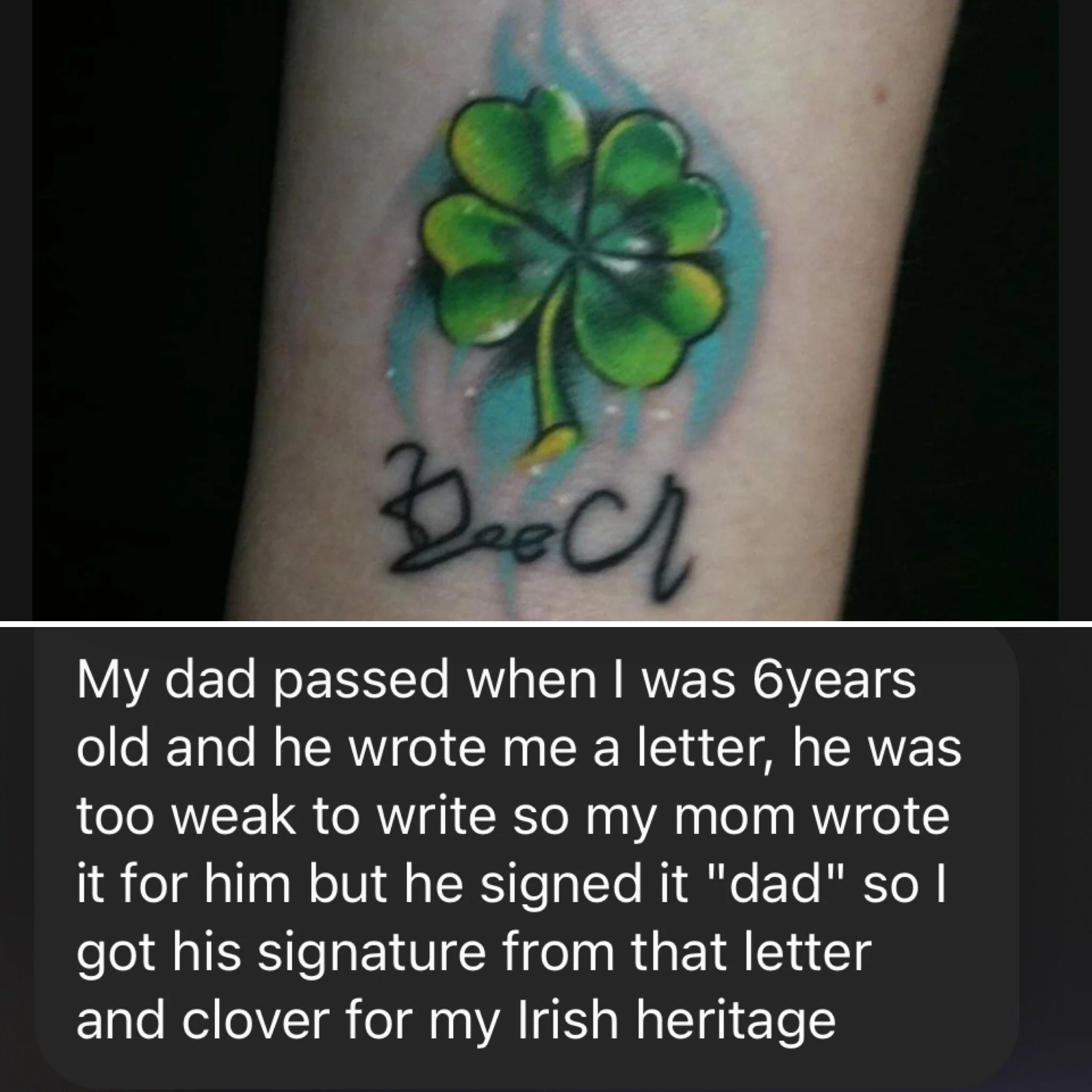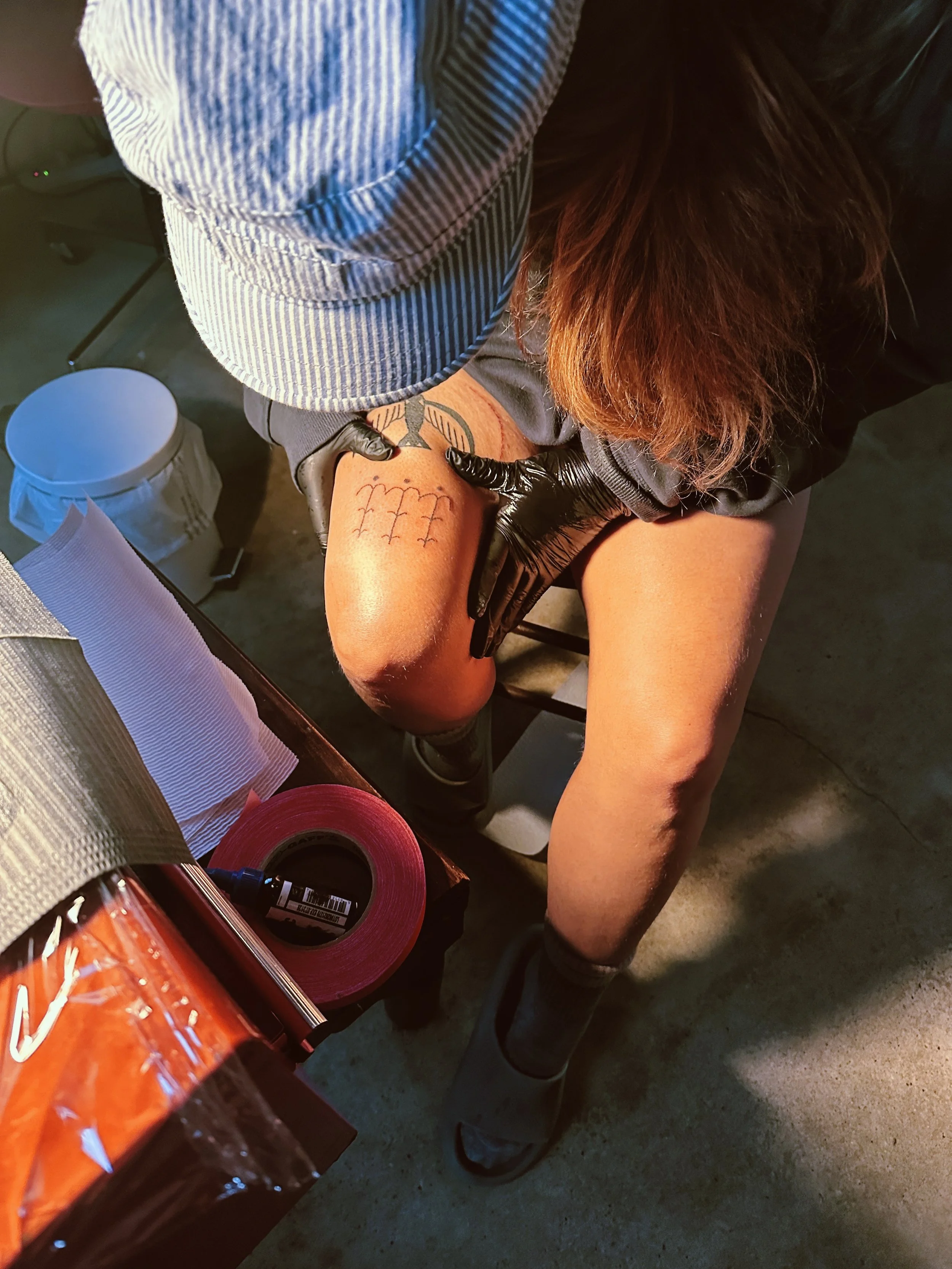Memorial tattoos, mediumship, and mortality
Many people who’ve come to me for mediumship readings say their biggest fear is that their loved one will eventually be forgotten (a fear commonly associated with mortality).
One way people solidify remembrance of their loved ones is through the ancient ritual art of tattooing. In the Western world, tattooing has long held a stigma for being a bad-boys-only expression; however, it has recently reentered our collective consciousness as a very human and mostly acceptable way to express oneself.
I’ve personally been getting tattooed on a semi-regular basis since I got sober at age 28. For me, getting sober after years of substance abuse is what woke me up from the trance of going through the motions, and sobriety has been my spiritual rite of passage. I like to honor the grief and pain I’ve experienced on my journey with body art from diverse artists and styles.
For several of my tattooed mediumship clients, tattoos are their link from this world to their loved ones in the next. Handwriting, the tangible expression of their loved one, is what I often see commemorated.
Sometimes tattooing can provide a therapeutic energy release in the recipient. Much like acupuncture and Chinese medicine, stimulating certain areas (or meridians) of the body is thought to move stagnant energies. In other cases, the mini-ritual of getting a tattoo can simply provide a sort of alchemy and/or relief.
“I have eight tattoos, and four are in memory of my loved ones,” one woman wrote me on Instagram. “I think of the pain my loved ones endured when they took their last breaths. Part of me feels like I want to share in their pain, so I got really big tattoos (for them) — and they hurt.”
I have asked so many people on Instagram to share their memorial tattoos with me because I am interested in memorial tattoos as a medium, but also I am interested in memorial tattoos as an artist.
My husband and I are in the process of learning stick-and-poke tattooing. We’re learning the old school way because it’s meditative and accessible. We spend a lot of time talking about tattoo history and tattoo styles. One thing I’ve learned in my studies is that tattooing was largely a woman’s job among many indigenous tribes of several now-colonized nations. This sentiment then led me to tattooing myself.
Me and the tattoo I gave myself on New Year’s Day, 2024.
In one of our recent conversations, my husband shared this insight with me: Tattooing is really the only artform that dies with the person. Paintings, recorded songs, films, and drawings — these things have potential to outlive us. People fear getting tattooed because they fear commitment, not because they fear permanence, for tattoos are not actually permanent. Tattoos only last as long the wearer.
And perhaps that’s at the heart of why we feel so compelled to tattoo and carry our loved ones who’ve left this earth — so we can ensure that their memory lasts here at least as long as we do.
Seeking to forget makes exile all the longer; the secret to redemption lies in remembrance.” — Richard von Weizsäcker, first president of reunited Germany




















